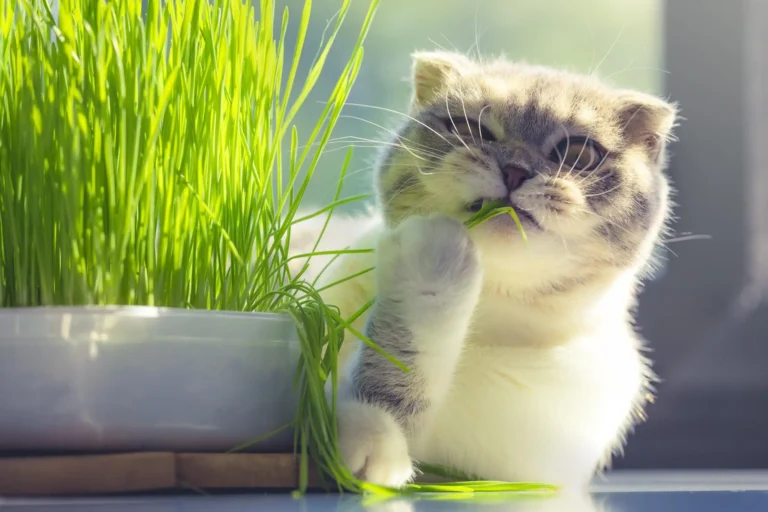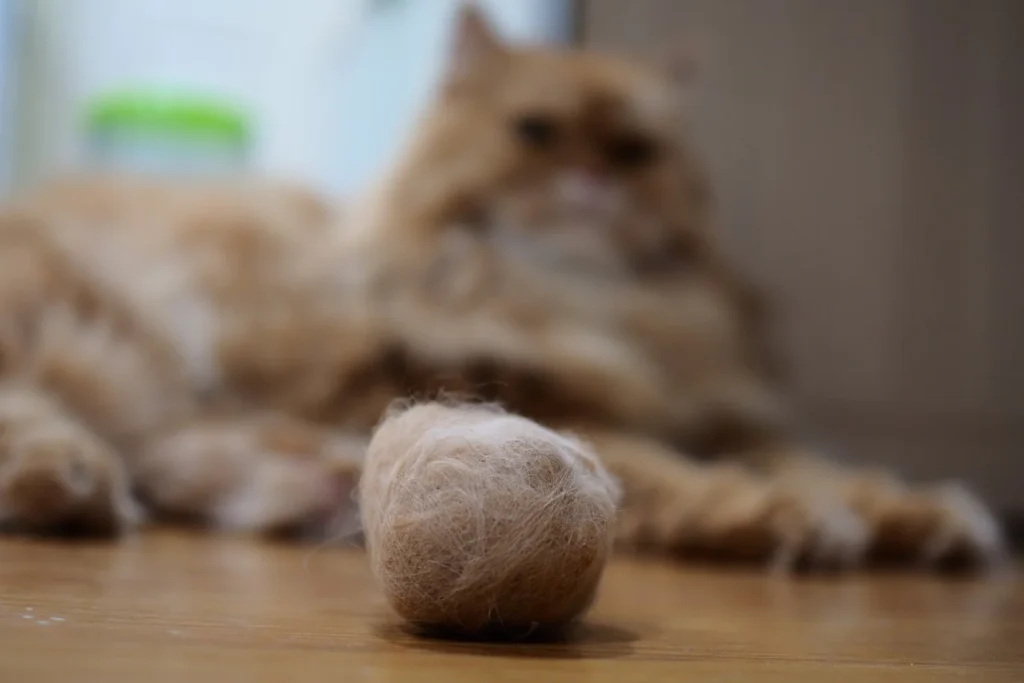Cat owners are all too familiar with the distinctive, unpleasant sound of a cat hacking up a hairball. While hairballs are a common occurrence, understanding what they are, what causes them, and how to prevent or manage them can help keep your feline friend comfortable. In this blog, we’ll delve into the world of cat hairballs and explore the role of cat grass in mitigating this issue.
What Are Cat Hairballs?
Hairballs are exactly what their name implies: balls of hair in your cat’s digestive system. They are typically tubular in shape and consist of hair that your cat ingests while grooming. Cats have tiny, backward-facing barbs on their tongues designed to clean and detangle their fur. During grooming, they swallow loose hair, which usually passes through the digestive system harmlessly and is excreted in the stool. However, sometimes, the hair collects in the stomach and forms a hairball.

What Causes Hairballs?
Several factors contribute to the formation of hairballs in cats, including:
- Grooming Habits: Cats that groom themselves excessively are more prone to hairballs.
- Seasonal Shedding: Cats shed their fur, especially during seasonal changes, leading to increased hair ingestion.
- Age: Older cats may be more susceptible to hairballs due to decreased gastrointestinal motility.
Dealing with Hairballs
Preventing hairballs in cats is an important aspect of their care. Here are some strategies:
- Regular Grooming: Brush your cat regularly to reduce the amount of loose hair they ingest during grooming.
- Hairball Remedies: Many commercial hairball remedies are available, usually in the form of treats or gels. These can help lubricate the digestive tract, allowing hair to pass more easily.
- Dietary Changes: Specialized hairball control cat foods are designed to help reduce hairball formation.
- Hydration: Ensure your cat has access to plenty of fresh water to help move hair through the digestive system.
The Role of Cat Grass
Cat grass, typically grown from wheat, oat, or barley seeds, can play a beneficial role in managing hairballs. Here’s how:
- Inducing Vomiting: When a cat consumes cat grass, it often triggers them to vomit. This can help expel hairballs from the stomach before they become problematic.
- Aiding Digestion: The fiber in cat grass can act as a natural laxative, promoting regular bowel movements and helping hairballs pass through the digestive system.
- Entertainment: Beyond its health benefits, cat grass can serve as a source of entertainment for your feline companion, giving them a designated place to nibble and play.
Growing Cat Grass
Cat grass is easy to grow at home, providing your cat with a safe and accessible source of fiber. You can find cat grass kits at pet stores or plant the seeds in a pot filled with soil. Place it in an area where your cat can easily access it and nibble at their leisure.

In conclusion, cat hairballs can be a common and bothersome issue for feline companions. Understanding the causes, preventive measures, and the role of cat grass can help you effectively manage and reduce the occurrence of hairballs in your beloved cat. Whether you choose to groom your cat regularly, provide specialized diets, or introduce cat grass into their routine, keeping your cat comfortable and healthy is the ultimate goal.

